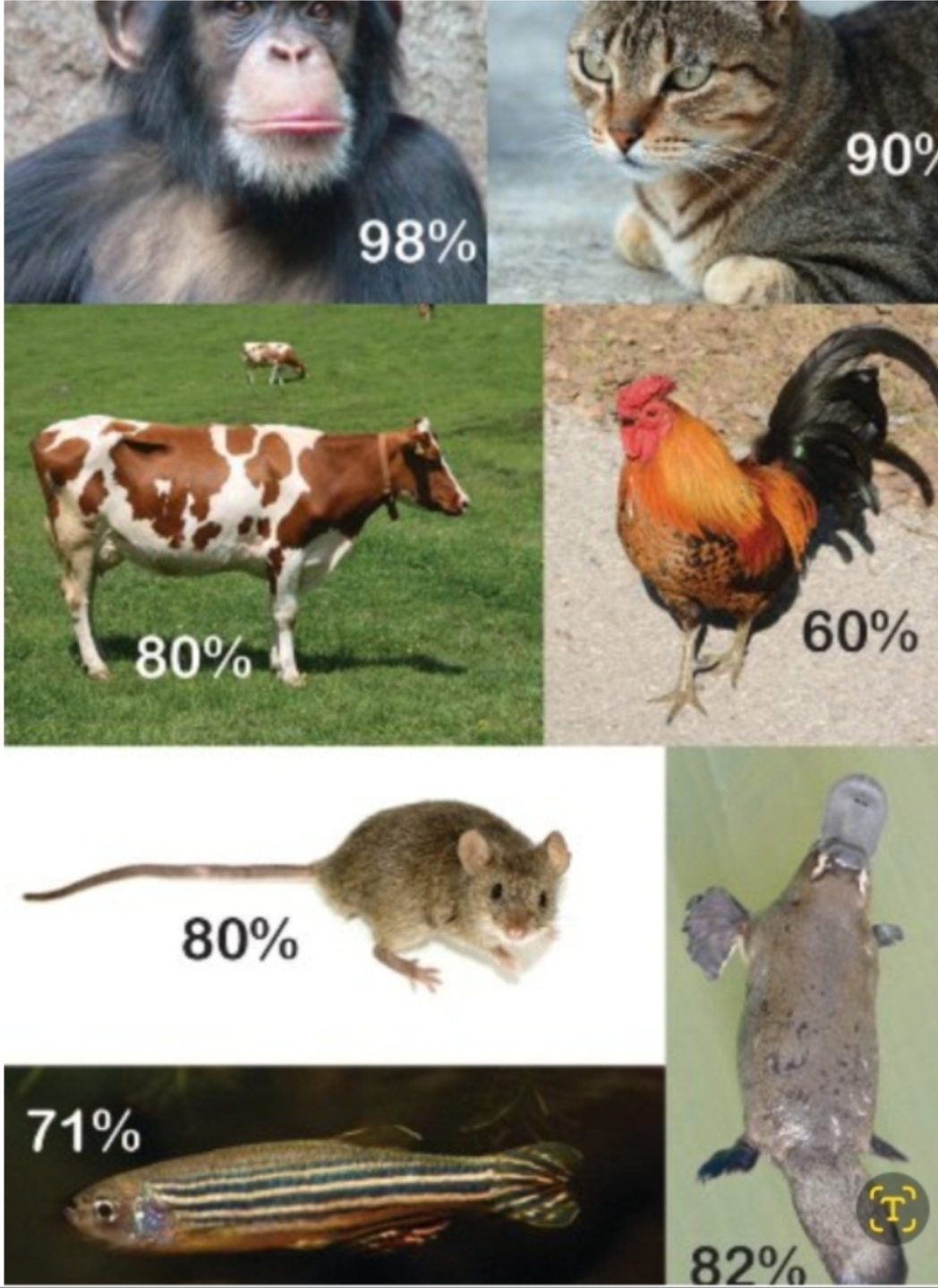Common Ancestry based on Junk DNA - an Appeal to Ignonce?
"In terms of junk DNA, we don’t use that term anymore because I think it was pretty much a case of hubris to imagine that we could dispense with any part of the genome, as if we knew enough to say it wasn’t functional. … Most of the genome that we used to think was there for spacer turns out to be doing stuff.”
- Francis Collins, head of the Human Genome Project
Until the Human Genome Project, scientists primarily used coding exonic DNA for common ancestry studies. Coding exonic DNA, which makes up about 2% of the human genome, is the DNA that is directly translated into proteins.
Because coding exonic DNA is relatively well conserved across different species this makes it a valuable tool for tracing common ancestry… or so we thought.
The use of non-coding (Junk) DNA (ncDNA) in common ancestry studies has been a topic of debate in recent years. While ncDNA was initially thought to be largely non-functional, it is now recognized that it plays a number of important roles in biology, including gene regulation, chromatin structure, and DNA replication. This has led some scientists to question the validity of using ncDNA for common ancestry studies, as it is unclear how these functional roles might affect the patterns of variation that are used to infer evolutionary relationships.
In order to use ncDNA more effectively for common ancestry studies, it is important to develop a better understanding of its functional roles. This will allow scientists to identify regions of ncDNA that are likely to be informative about evolutionary relationships and to avoid regions that are likely to be confounded by functional constraints.
Relying solely on non-coding DNA, often referred to as "junk DNA," for common ancestry studies without fully understanding its function could lead to errors similar to those made in the past. This is because non-coding DNA is not as well conserved as coding DNA, which means that it is more prone to mutations and changes over time. As a result, it can be more difficult to interpret patterns in non-coding DNA and draw accurate conclusions about evolutionary relationships.
The exact percentage of functional junk DNA is still being debated by scientists, but estimates range from 8% to 80%. This is because there is no single definition of what constitutes "functional" junk DNA. Some scientists believe that any DNA that is transcribed into RNA is functional, while others believe that only DNA that codes for proteins or has a clear regulatory role is functional.
The ENCODE project, which was completed in 2012, found that 80% of the human genome is transcribed into RNA. However, this does not necessarily mean that all of this DNA is functional. Some of the RNA transcripts may be non-functional byproducts of the transcription process.
Other studies have shown that some junk DNA has a regulatory role in gene expression. For example, some junk DNA sequences act as enhancers, which are regions of DNA that bind to proteins and increase the transcription of nearby genes. Other junk DNA sequences act as silencers, which reduce the transcription of nearby genes. 98% of Junk DNA is within 1,000 base pairs of exonic genes supporting this view.
It is likely that the true percentage of functional junk DNA lies somewhere between the two extremes of 8% and 80%. As scientists learn more about the non-coding genome, we will get a better understanding of how much of it is actually functional.
Here are some ways in which future prediction of common ancestry based on Junk DNA is an appeal to ignorance:
It assumes that we know what junk DNA is and its function. The term "junk DNA" is a misnomer, as it is now known that much of this DNA has important functions, such as regulating gene expression and providing structural support for chromosomes. Therefore, any attempt to predict common ancestry based on junk DNA is based on an incomplete understanding of the genome.
It ignores the possibility that junk DNA may evolve rapidly. Junk DNA is known to evolve more quickly than coding DNA, which means that it may not be a reliable indicator of common ancestry. For example, two species with a recent common ancestor may have very different amounts of junk DNA, simply because it has evolved at different rates in the two lineages.
It is based on a misunderstanding of the scientific process. Science is not about making definitive predictions about the future; it is about making provisional hypotheses that can be tested and refined. Any attempt to predict common ancestry based on junk DNA is premature and should be treated with caution.
In conclusion, future prediction of common ancestry based on Junk DNA is an appeal to ignorance because it is based on a misunderstanding of the genome, ignores the possibility that junk DNA may evolve rapidly, does not take into account other sources of evidence for common ancestry, and is based on a misunderstanding of the scientific process.




Comments
Post a Comment